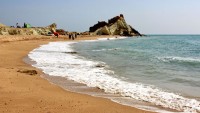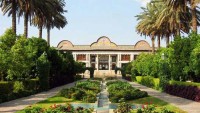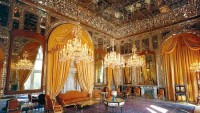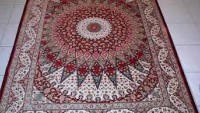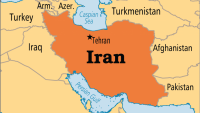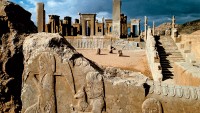Saryazd and Kharaanagh Villages in Yazd Province
Saryazd and Kharaanagh Villages in Yazd Province
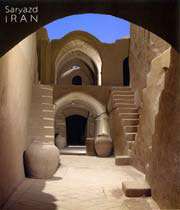
Saryazd Village
Being one of the magnificent historic villages in Iran’s central desert region, Saryazd village is located 6 km North East of the city of Mehriz, 28 km South West of Yazd city. Saryazd village is surrounded by a number of mountains on the north east and north west. With an altitude of 1380 meters above sea level the village has a hot and dry weather just like the whole region. Archeological researches conducted on the earthenware found at the area have provided proofs to the fact that this region has passed its most lively times during Saljuqid, Ilkhanid and Safavid eras. According to some historical evidence and what experts believe, before the city of Yazd came to existence, there had been an area near Saryazd village; it was named Farafar and fell into ruins after a period of drought.
In spite of being located in a mostly-desert area, Saryazd village has many orchards. This village used to be much more inhabited and populous in the past, but due to droughts, its residents have migrated to the cities in its vicinity especially Yazd. However, the existence of appropriate soil and enough water in Saryazd village during the recent decades has led to flourishing of orchards and agricultural farms.
The inhabitants of this village make a living from agriculture, animal husbandry, and horticulture. The main agricultural and garden products of the village are wheat, barley, vegetables, pomegranate, pistachio, water melon, and melon. Various dairy and animal products are also produced in the village. Besides working on farms, some locals make handicrafts especially carpets to earn income.
Saryazd village is situated in a vast plain and has a dense residential context. Most houses in the old part of the village are built from materials such as adobe and clay with a special architecture style proper for deserts. Lanes in this village are narrow and meandering, and houses have thick tall walls.
In these rural houses, a space is also provided for doing handicraft-related and other economic activities. Modern buildings of the village are built from materials like cement, brick, iron, chalk and the like.
The Saryazd castle is one of the largest defense castles in Iran’s central desert. According to experts, the initial core of this castle had been constructed during Sassanid period and it was renovated and restored in the Safavid era. Defensive elements like trench entrance, fence, winding walls and supportive towers are visible there. Rooms for temporary settlement, stores for keeping food stuff, and stables and barns are among the most important spaces in the castle.
Natural attractions of Saryazd village consist of numerous aqueducts which are the source of the village’s prosperity. It’s being adjacent to the desert between Yazd and Kerman is considered as another attraction for the tourists who are fond of traveling to deserts. However in a short distance from the desert there are green and cool routes in which brooks run.
The attractions of this village are not limited to the historical and natural ones but there can be seen cultural attractions, too. The life style of the villagers, their religious ceremonies in Hosseiniehs, their cuisine, customs and traditions, and their being so simple, contented, pure, kind, and friendly are all cultural social attractions in the village. Pomegranate and nuts are souvenirs taken from Saryazd; and the village is accessible via a road from the city of Mehriz.
Kharanagh village
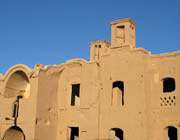
Kharanagh is located 85 km from Yazd on the road from Tabas to Yazd. Despite being in a mostly-desert region, this village is green, too. On the east of Kharaanagh is the seasonal river of Kharaanagh, Ghal’e Mountain is on its north west, and it borders with desert on the south. The region is famous for Chadormalu iron ore mine. Saqand uranium mine and other mines of barite, granite, and zinc, and also a protected area called Darreh-Anjir (meaning the fig valley) with animals like goat, ewe, ram, wild cat, leopard, and buster are other attractions of the region. But it is the historical monuments such as shaking minarets, a castle, a caravanserai, waterway bridge, a bath, a mill, Jame’ mosque, and a Hosseinieh which have added to its significance. Besides, there is a Zoroastrian’s shrine called Pire-Sabze Chak-Chak in the vicinity of Kharaanagh that adds to its tourist attractions.
Kharanagh village is located between two mountainous and desert regions. It has a ruined and a newly-constructed part. The ruined part, in which the ruined castle is situated, used to be residential till about 30 years ago.
Source: irib.ir

